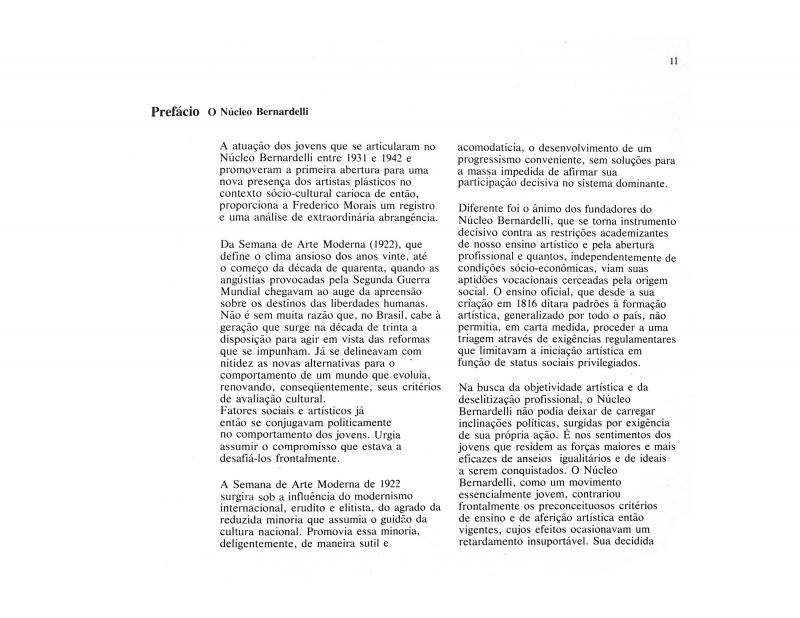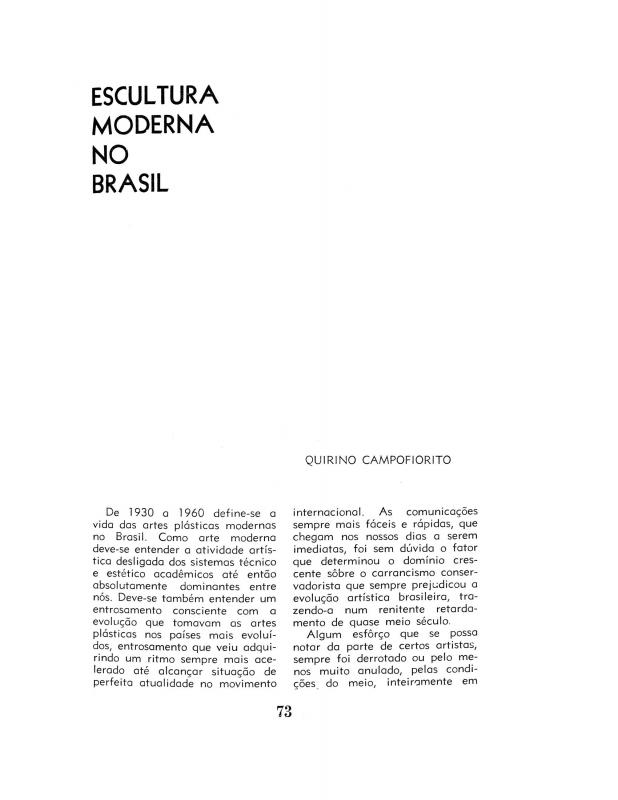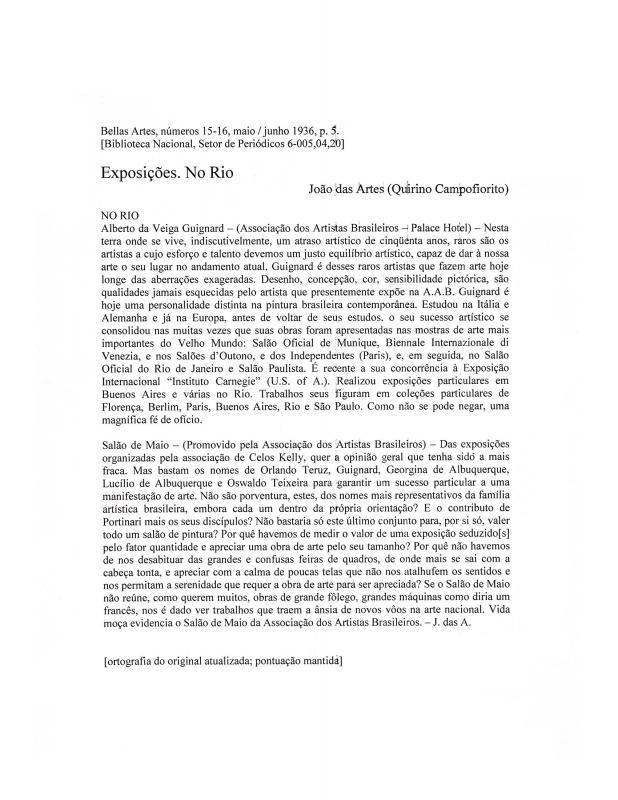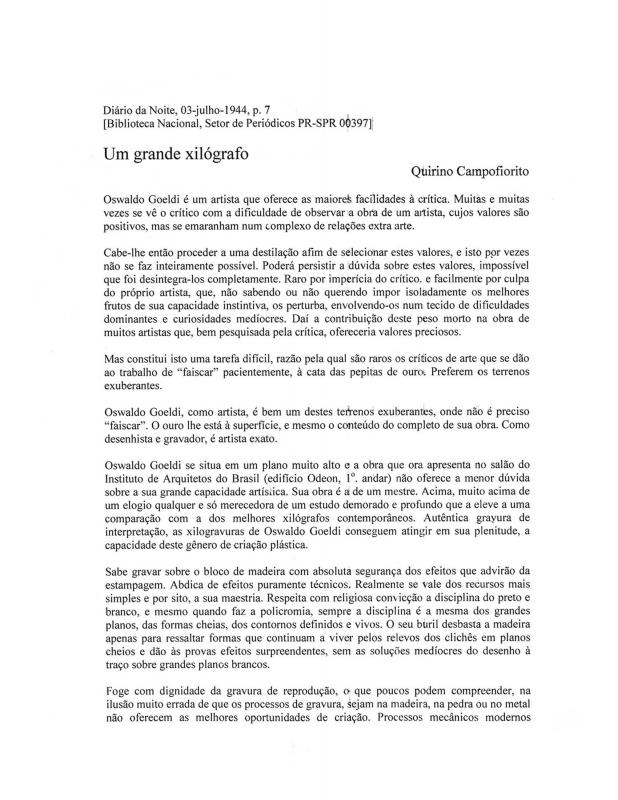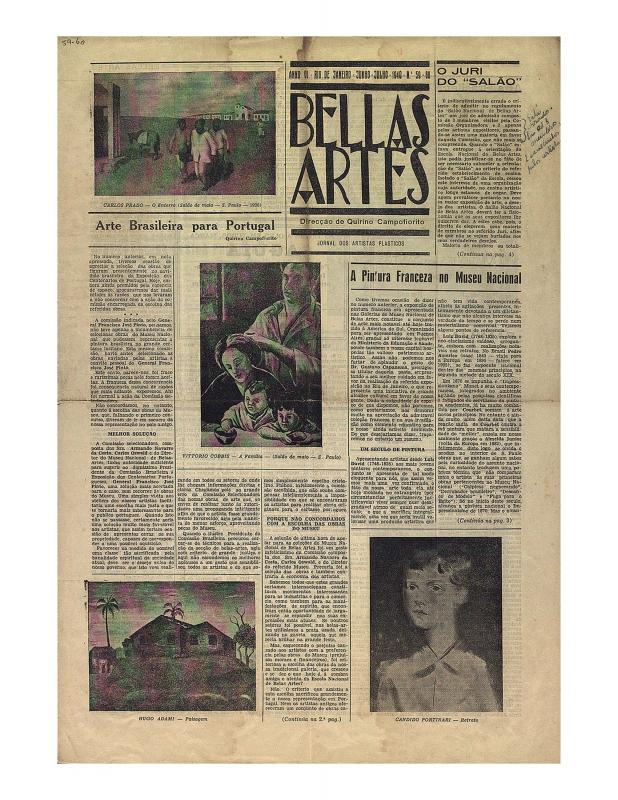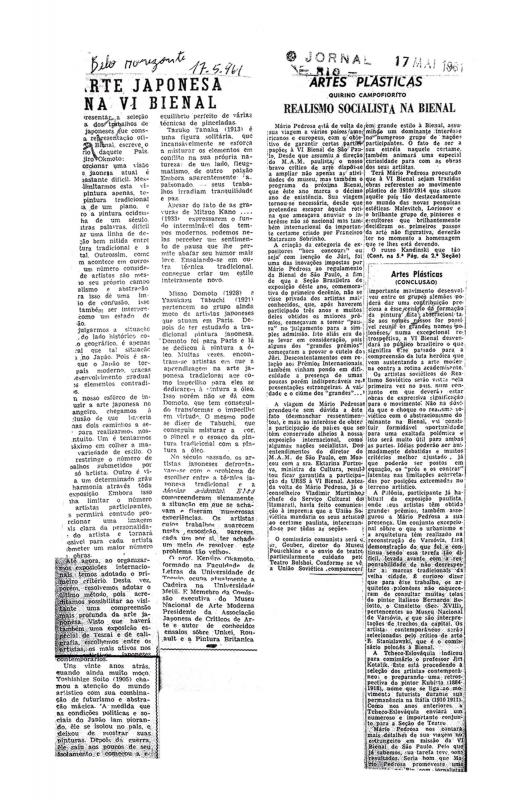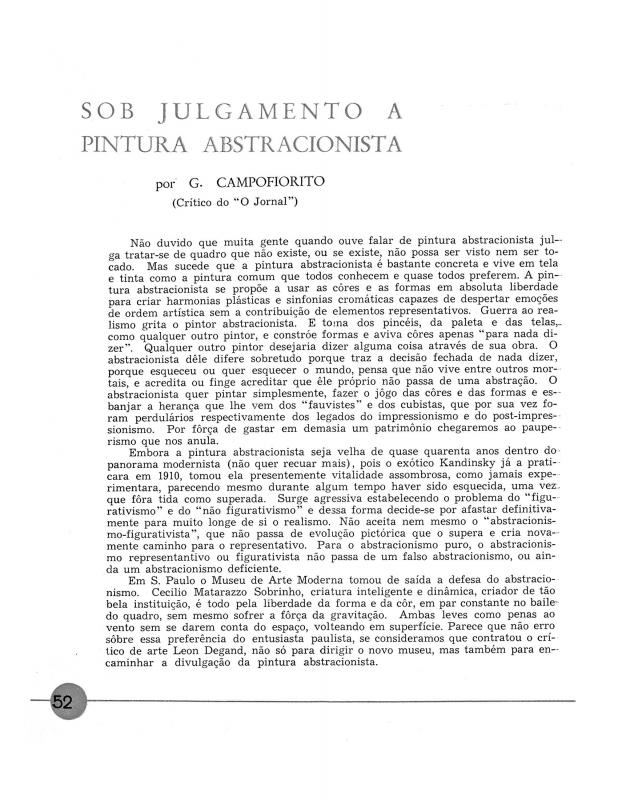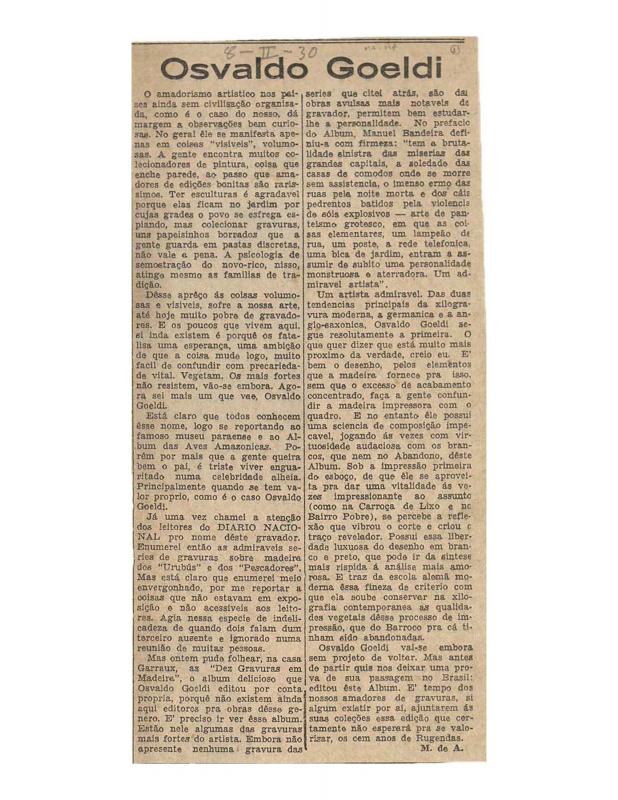Painter, critic, professor, and art historian Quirino Campofiorito (1902–93) presided over what was called the Núcleo Bernardelli. One of the founders of the Associação de Artistas Brasileiros (AAB), he was active in countless organizations and events in the Brazilian art scene. The journal Belas Artes, which was created at Campofiorito’s initiative, would become the official publication of the AAB from 1935 to 1940, as well as one of the main forums in the mid-thirties for debate and art criticism in Rio de Janeiro. The Salão de Maio, geared to promoting modern art in Rio de Janeiro, the capital of Brazil at the time, was another major initiative of the AAB in the thirties.
The preface to the book Núcleo Bernardelli - Arte brasileira nos anos 30 e 40 by art critic Frederico Morais, includes an important 1982 testimonial about “O Núcleo Bernardelli” by Quirino Campofiorito. Campofiorito was one of the group founders, and was also one of the only members still alive when Morais was writing the book [see doc. no. 1110419].
Other critical texts by Campofiorito include “Escultura moderna no Brasil” [doc. no. 1111370], “Exposições no Rio” [doc. no. 1111003], “Um grande xilógrafo” [doc. no. 1111010], “A pintura franceza no Museu Nacional” [doc. no. 1091438], “Realismo socialista na Bienal” [doc. no. 1111109], and “Sob julgamento a pintura abstracionista” [doc. no. 1085881].
In a critically precise text, Mário de Andrade (1893–1945) places the production of draftsman, illustrator, and printmaker Oswaldo Goeldi (1895–1961) in the tradition of German woodcuts [doc. no. 782969]. In 1923, Goeldi was first introduced to that technique by Ricardo Bampi. Poet Manuel Bandeira (1886–1968) wrote the introduction to the portfolio Dez gravuras em madeira de Oswaldo Goeldi.

